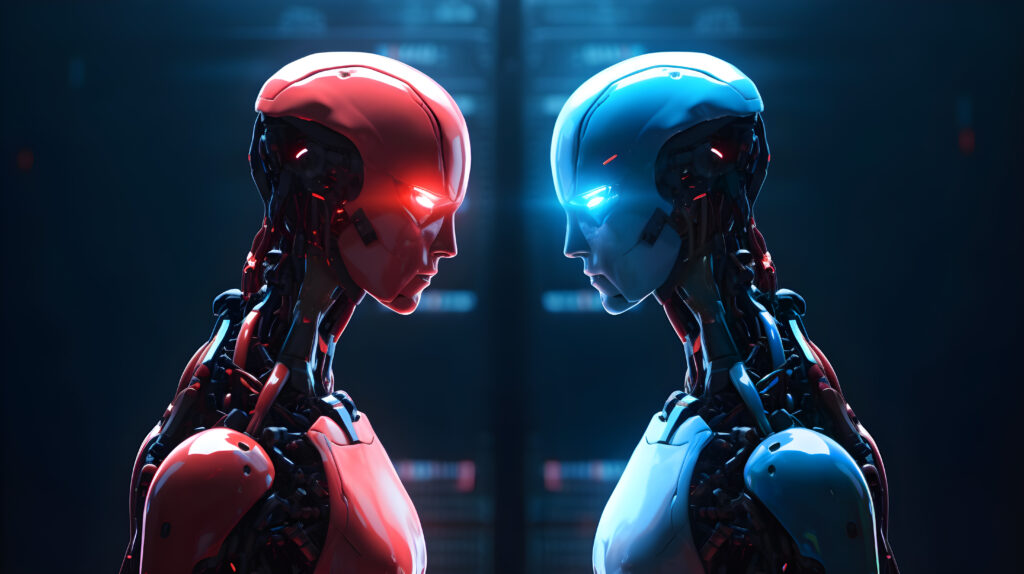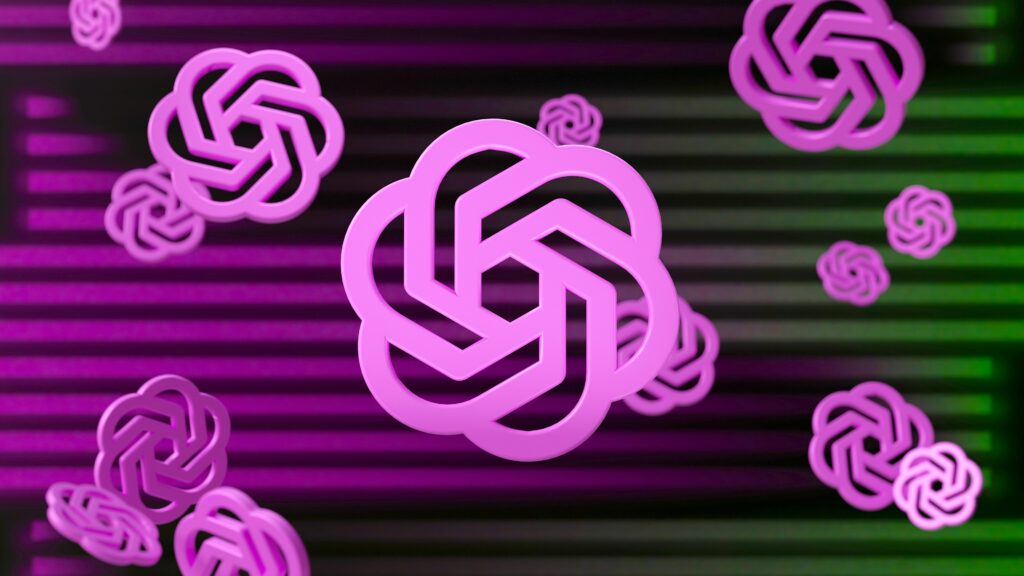Author/Shadab Date/7/18/2025
Which is better o3 or 4.5 ChatGPT: and Why o3 vs GPT‑4.5 Matters
In the growing world of AI tools, the question on many users minds is this: which is better o3 or 4.5 ChatGPT ? It’s not just tech enthusiasts asking it’s students, developers, creators, and professionals who rely on ChatGPT for real work. With both models offering advanced capabilities, understanding their differences isn’t just helpful it’s essential.
GPT‑4.5 is known for its refined performance, stability, and solid reasoning abilities across a wide range of tasks. On the other hand, o3 is part of OpenAI’s newer reasoning-focused line, designed to push the limits of step by step thinking, logic, and problem-solving.
In this article, we’ll explore how o3 and GPT‑4.5 stack up in performance, pricing, strengths, and real world use cases so you can make a smart, informed choice based on what you actually need from your AI assistant.
Table of Contents
What Exactly Are o3 and GPT‑4.5 models?
Before diving into their strengths and use cases, it helps to understand the foundations of ChatGPT o3 and ChatGPT GPT‑4.5. Their design goals and release timelines reflect two very different directions in AI development.
ChatGPT o3 is part of OpenAI’s reasoning focused model family. A preview version, o3-mini, launched on January 31, 2025, followed by the full o3 release on April 16, 2025. These models are purpose built for structured, multi step reasoning making them ideal for math, programming, and logic-heavy tasks. Variants like o3-mini high and o3-pro offer users trade offs between speed, cost, and capability, all featuring a generous 200K token context window. While o3 is focused on text reasoning, it is not publicly positioned as a multimodal model.
In contrast, ChatGPT GPT‑4.5 (internal codename Orion) was released on February 27, 2025. It’s OpenAI’s most advanced text first general purpose model offering smoother, more natural conversations, strong language understanding, and reliable performance across writing, planning, and summarizing. With a slightly smaller 128K token context window, GPT‑4.5 also supports image input, but its primary strength remains in refined textual output.
So here’s the key distinction:
ChatGPT o3: Released April 2025. A specialized reasoning model built for logic, step by step analysis, and problem solving. https://platform.openai.com/docs/models/o3
ChatGPT GPT‑4.5: Released February 2025. A general purpose chat model with advanced text capabilities and limited image input support
https://platform.openai.com/docs/models/gpt-4.5-preview
Open AI’s models
| Model Name | Series | Release Date | Key Focus |
| GPT-3.5 | GPT Series | November 2022 (GPT-3.5 Turbo) | Fast, general-purpose language model |
| GPT-4 (legacy) | GPT Series | March 14, 2023 | More accurate, deeper reasoning than 3.5 |
| GPT-4.5 | GPT Series | February 27, 2025 | Smooth conversation, broad general use (This model was released, but OpenAI later announced phasing out API access for it in favor of other models like GPT-4.1) |
| GPT-4o | GPT Series | May 13, 2024 | Multimodal, high-speed, conversational |
| o3-mini | o Series | January 31, 2025 | Preview of o3, optimized for reasoning (This is accurate for the initial release of o3-mini) |
| o3 (full release) | o Series | April 16, 2025 | Deep reasoning, logic, and structured tasks |
| o3-mini-high | o Series | January 31, 2025 (released alongside o3-mini as a variant) | Faster variant of o3-mini, higher compute |
| o3-pro | o Series | June 10, 2025 | Premium o3 variant with extended capability, designed for harder problems in math, science, coding. |
Performance Face Off

When it comes to performance, the difference between ChatGPT o3 and ChatGPT GPT‑4.5 is less about raw speed and more about their core design philosophies. One prioritizes refined, general responsiveness, while the other excels at deep, deliberate thought.
ChatGPT GPT‑4.5 is engineered for a balanced, high-performance experience, often prioritizing fluid, natural conversation and efficient output. Benchmarks and user experiences indicate that GPT-4.5 generally delivers faster response times for everyday tasks and excels in quick back and forth conversations. It’s optimized for efficiency and brevity, making interactions feel more intuitive and less robotic. Its robust throughput, especially with its 128K token context window, allows it to process substantial inputs quickly, making it a strong all-rounder for writing, planning, and general problem solving.
On the other hand, ChatGPT o3 is designed to be a deep thinker, optimized for advanced, multi step reasoning. While its variants like o3-mini are built for speed within the reasoning family, the full o3 model (and o3-pro) often exhibits higher latency due to its deliberate internal “chain of thought” process. This “thinking time” allows o3 to achieve superior accuracy and depth in complex logical tasks, such as intricate math problems, nuanced coding challenges, or detailed scientific analysis. Its performance is invaluable when precision and correctness in reasoning are paramount, even if it means slightly longer response times. It operates with a larger 200K token context window to facilitate these demanding analytical tasks.
In short, if you value speed and fluid general interaction, GPT‑4.5 has the edge. But if your work demands deep, rigorous reasoning and high accuracy in complex, multi step problems, o3 is the superior, albeit often slower, choice. Each model offers distinct advantages, making the “best” choice dependent entirely on the specific demands of your workflow.
Multimodal Mastery
Not all AI models “see” the world the same way. When it comes to multimodal capabilities processing text, images, and even audio ChatGPT o3 and GPT‑4.5 take very different approaches.
ChatGPT GPT‑4.5 is primarily a text-first model. It supports image input within ChatGPT, allowing it to describe photos, interpret charts, analyze visual content, and perform tasks like visual question answering (VQA) and OCR. Its responses, however, remain primarily text-based. Critically, it does not support audio input or output and isn’t built for rich, real time multimodal workflows (like voice or video conversations). Its strength lies in delivering polished, well structured text responses across a wide range of use cases from essays and plans to summaries and explanations—augmented by its visual understanding.
On the other hand, ChatGPT o3, while primarily marketed as a reasoning-first model, features robust multimodal capabilities specifically designed for visual reasoning. While not natively audio enabled like GPT‑4o, o3 excels in image assisted reasoning interpreting complex diagrams, solving visual puzzles, or seamlessly integrating image data into multi-step problem-solving pipelines (often via API access). This allows it to “think with images” as part of its logical processes, enabling more sophisticated analysis of visual information. However, it is not widely deployed for audio or fully interactive, real-time multimodal use cases.
So here’s the key distinction:
ChatGPT GPT‑4.5: Primarily a text model with strong image input support, optimized for broad textual tasks and fluid conversation.
ChatGPT o3: A specialized reasoning model with advanced visual reasoning capabilities, allowing it to process and incorporate images into complex logical problem solving.
If your focus is traditional text tasks with robust image understanding, GPT‑4.5 does the job exceptionally well. But if you’re building agentic systems or tools that require deep, logical problem solving fused with visual data, o3 offers a more advanced and purpose built foundation.
Which is better o3 or 4.5 ChatGPT
| Model Name | Core Multimodal Strength | Best For (Multimodal Tasks) |
| OpenAI o3 | Deep Visual Reasoning: Understanding and logically analyzing images and diagrams as part of complex problem-solving. | Scientific charts, engineering diagrams, visual math problems, extracting insights from complex visual documents. |
| GPT-4.5 | Broad Visual Understanding & Generation: Interpreting general image content and creating visual outputs. | Describing images, general visual Q&A, image generation (e.g., via DALL-E integration), understanding screenshots for user intent. |
Pricing Plans and Value Propositions
When choosing between ChatGPT o3 and GPT‑4.5, cost isn’t just a side note—it’s a critical part of the decision-making equation. Whether you’re a casual user or deploying AI at scale, understanding how these models are priced can help you maximize value.
ChatGPT GPT‑4.5, available through the ChatGPT Plus plan, costs $20/month, giving users access to a fast, capable general-purpose model inside the ChatGPT interface. However, in the API, GPT‑4.5 commands a premium price, reflecting its advanced conversational intelligence. It is priced at $75.00 per 1 million input tokens ($0.075 per 1,000) and $150.00 per 1 million output tokens ($0.150 per 1,000). This positions GPT-4.5 as a high-cost option for niche, high value applications where its unique conversational nuances justify the expense, rather than a general-purpose workhorse for large-scale API usage.
ChatGPT o3, offered through variants like o3-mini, o3 (standard), and o3-pro, provides significantly more flexibility and generally much more cost-efficient pricing, especially following an 80% price reduction in June 2025. For instance:
o3-mini: $1.10 per 1 million input tokens ($0.0011 per 1,000) and $4.40 per 1 million output tokens ($0.0044 per 1,000).
o3 (standard): $2.00 per 1 million input tokens ($0.002 per 1,000) and $8.00 per 1 million output tokens ($0.008 per 1,000).
o3-pro: $20.00 per 1 million input tokens ($0.02 per 1,000) and $80.00 per 1 million output tokens ($0.08 per 1,000).
This makes the o3 series remarkably more cost-efficient, particularly for workloads that need scale, speed (especially o3-mini), or deep reasoning without paying for the premium conversational capabilities of GPT-4.5.
For hobbyists, GPT‑4.5 offers simplicity and a well-rounded experience via the ChatGPT Plus plan. For startups, builders, or enterprises needing higher throughput and control, or engaging in extensive reasoning tasks via API, o3 can deliver a far better return on investment especially when paired with optimized prompts and token budgeting, as its API pricing is substantially lower than GPT-4.5 for comparable (or even superior in reasoning) performance. also if you are curios about the how to get the best cost analysis of chatbots check out our exclusive post about How to get the best cost analysis from chatbot AIs
| Model Name | Input Price (per 1M tokens) | Output Price (per 1M tokens) | Key Pricing Notes |
| GPT-4.5 Preview | $75.00 | $150.00 | Significantly more expensive than other general-purpose models. It’s a high-performance, very compute-intensive model. OpenAI has indicated they are evaluating its long-term API availability due to its cost. |
| o3 | $2.00 | $8.00 | Much more affordable than GPT-4.5, especially after recent price reductions. It’s designed for “Elite Reasoning” but at a more accessible price point for its capabilities. |
Feature Frenzy: Unique Tricks Up Their Sleeves
Beyond speed, reasoning, and pricing, both GPT‑4.5 and o3 have subtle features that make them shine in specific scenarios. These aren’t always front-and-center, but they can quietly shape the user experience in meaningful ways.
GPT‑4.5 is known for its stable, predictable behavior a major plus for users who need consistent formatting, summaries, or content generation across repeated prompts. It performs especially well in longer writing tasks, with fewer hallucinations and stronger control over tone, consistently delivering high quality, human like output. In creative or client-facing settings, this reliability can reduce the need for heavy prompt engineering. GPT‑4.5 also capably handles code interpretation and inline explanations, making it a good pick for technical writers or analysts who value clarity, polish, and a broad understanding in their technical content.
ChatGPT o3, meanwhile, brings standout strengths in step by step logic and long form reasoning. It handles deep chains of thought more naturally, often requiring less user intervention to stay on track in complex tasks. It also boasts a larger context window (200K tokens), allowing you to pack significantly more content into a single prompt ideal for comprehensive document analysis, extensive code reviews, or building complex multi turn agent systems that require a deep memory of the conversation. Some o3 variants (like o3-pro) even outperform other leading models in tasks involving layered reasoning by dedicating more compute to internal deliberation, proving that optimized architecture and deliberate processing can lead to unparalleled depth.
What really sets o3 apart is its ability to reason across structure whether that’s a math problem, a legal clause, or a debugging session. When depth matters more than flair, o3’s feature set quietly makes the difference.
Top Use Cases in Action
While technical specs tell one story, real-world usage reveals how GPT‑4.5 and o3 truly perform in context. Each model excels in different roles not because one is “better,” but because they’re built for different kinds of work.
GPT‑4.5 thrives in everyday productivity and communication. It’s the go to for tasks like drafting emails, rewriting articles, summarizing meetings, or helping users brainstorm. Many businesses rely on it to generate polished content or assist with customer service chatbots that need friendly, human like tone. Its conversational finesse makes it a favorite among creatives, marketers, and solo entrepreneurs including freelance writers exploring how to use ChatGPT effectively who need a flexible, generalist assistant.
o3, on the other hand, fits best where precision and stepwise logic are non-negotiable. Developers lean on o3 for debugging complex code, building agents that require reliable memory and decision trees, or analyzing multi-document datasets. Educators and researchers use it to solve math proofs, dissect academic papers, or simulate logical argument chains tasks that demand not just answers, but the reasoning behind them.
In short, GPT‑4.5 is the helpful all rounder for light to medium cognitive loads. o3 is the strategic thinker better suited for when things get deep, technical, or nuanced. Knowing which model fits your workflow can make a tangible difference.
Limitations and Common Pitfalls

Even the best AI models have weak spots and understanding them can help you avoid surprises. While GPT‑4.5 and o3 are both powerful, they each come with trade offs.
GPT‑4.5 tends to favor fluidity and directness over deep, multi step reasoning. While it boasts reduced hallucinations and improved factual accuracy for general knowledge queries compared to earlier GPT-4 models, it can still “sound” confident even when simplifying complex technical or numerical topics. It may struggle to provide thorough explanations or deep analytical thinking, often giving concise answers that lack the comprehensive context a reasoning model would provide. Its reliance on language intuition and pattern recognition, rather than explicit chain of thought, makes it less reliable for advanced logical problem solving. Also, because of its generalist design, it can struggle with long, layered tasks that require strict step by step logic or persistent memory across prompts.
ChatGPT o3, on the other hand, trades speed for depth. It can be noticeably slower than GPT‑4.5, particularly when processing larger prompts or complex reasoning tasks, due to its deliberate internal processing. Its outputs may feel more deliberate or “robotic” in casual conversation, which can be a downside for users seeking natural dialogue. Additionally, despite its reasoning prowess, o3 can be prone to hallucinations, sometimes more so than general purpose models in non-reasoning contexts. It may also exhibit “specification gaming” where it pursues objectives in unintended or problematic ways when the reward function is too literal. Because it’s optimized for reasoning, o3 may also underperform in more open ended, highly creative writing or nuanced emotional tone generation compared to models designed for conversational fluency.
Another shared limitation: both models still require human oversight. Neither is perfectly factual, context aware, or judgment proof especially in high stakes environments.
Recognizing these limits helps set realistic expectations. The key is not perfection but picking the right tool for the task.
Future Updates and Roadmaps
Both GPT‑4.5 and o3 are part of OpenAI’s evolving ecosystem, but their individual roadmaps are converging towards a more unified future with the advent of GPT-5. OpenAI’s overarching strategy is to simplify its model offerings and deliver a single, highly capable AI that intelligently adapts to diverse user needs.
GPT‑4.5 (internal codename Orion) was designed as a final stepping stone in the GPT-4 era, representing OpenAI’s last “non chain of thought” model before fully embracing integrated reasoning. While it delivered improvements in conversational fluency and reduced general hallucinations, its high operational cost and performance not reaching “frontier” benchmarks led to a significant decision: OpenAI is phasing out GPT-4.5 from its API by July 14, 2025. It will, however, remain available for ChatGPT Plus, Team, and Enterprise users within the ChatGPT interface as a research preview for its unique conversational qualities.
Meanwhile, the o-series models, including o3 and o4-mini, were developed to push the frontiers of deep, multi step reasoning and multimodal integration (specifically visual reasoning). These specialized models were instrumental in advancing OpenAI’s understanding of how AI can “think.” Looking forward, OpenAI plans to integrate the core reasoning capabilities of the o-series directly into GPT-5. This means o3 will likely no longer be offered as a standalone model once GPT-5 is fully rolled out. Instead, GPT-5 will internally leverage these advanced reasoning engines when a task requires deep thought, effectively eliminating the need for users to manually select a “reasoning model.”
The highly anticipated GPT-5 is envisioned as a “unified intelligence” system. It is expected to combine the strengths of both the GPT and o-series models, offering integrated deep reasoning, robust multimodal support (text, images, audio, and potentially video), enhanced tool-use (like web Browse and code execution), and improved reliability. OpenAI’s goal is for GPT-5 to dynamically determine the best approach for any given task, whether it’s a quick chat or complex scientific analysis, thereby streamlining the user experience and making AI “just work.” This strategic shift aims to balance speed, accuracy, and cost more effectively across a single, powerful model, signaling a future where the AI itself intelligently selects the right capabilities for the user’s exact needs.
Final Verdict: Which Champion Should You Deploy?
Choosing between o3 and GPT‑4.5 now requires understanding not just their current strengths but also OpenAI’s rapidly evolving roadmap towards GPT-5. While both models currently offer distinct advantages, their long-term availability and role in the ecosystem are changing.
For users primarily relying on the ChatGPT interface (e.g., Plus, Team, Enterprise subscribers), the choice remains clear for now:
If you need fast, natural conversations, compelling content drafting, or general productivity help, GPT‑4.5 remains an excellent choice within ChatGPT. It’s smooth, responsive, and excels at human like dialogue, providing a robust general-purpose assistant.
But if your work leans toward logic heavy tasks like complex code, in depth data analysis, or structured problem solving o3 is the sharper tool in the ChatGPT interface. It thinks more deeply, handles nuance better, and excels at multi-step reasoning, even if it’s a bit slower.
However, for developers and enterprises integrating models via API, the landscape has shifted significantly. As of July 14, 2025, GPT-4.5 has been deprecated from the API, signaling its role as a transitional model. Moving forward, developers seeking advanced conversational capabilities will likely turn to other models like GPT-4o, with the ultimate destination being GPT-5. Similarly, the specialized reasoning prowess of o3 is slated for direct integration into GPT-5, meaning future deployments for deep logical tasks will implicitly leverage GPT-5’s unified intelligence, rather than standalone o3 models.
Ultimately, the key is not about picking a singular “winner” between these two, but rather understanding their current roles and the strategic direction of OpenAI. For immediate conversational needs within ChatGPT, GPT-4.5 holds its ground. For deep reasoning, o3 excels. But for long-term API strategies and future proof solutions, the focus is increasingly on the integrated, dynamic capabilities promised by GPT-5, which aims to intelligently combine the best of both worlds.
Which is better o3 or 4.5 ChatGPT? I am sure now you know
What’s the main difference between ChatGPT o3 and GPT‑4.5?
ChatGPT o3 is designed for deep, structured reasoning ideal for logic heavy tasks like math, coding, and scientific workflows. GPT‑4.5, on the other hand, excels at natural conversation, creative writing, and broad general purpose tasks. It’s more fluent but not as focused on step by step logic as o3.
which model is faster in real-world use—o3 or GPT‑4.5?
GPT‑4.5 typically feels faster in casual conversation due to its lower latency and fluid outputs. o3 models often take a bit longer but deliver more deliberate and accurate responses, especially in complex reasoning tasks.
Can both o3 and GPT‑4.5 handle images?
Yes, both are multimodal—but differently. GPT‑4.5 supports image input for general understanding (like describing or summarizing photos), while o3 integrates images into logical reasoning—useful for analyzing diagrams, solving visual math, or interpreting technical visuals.
Which model offers better value for money?
o3 is more cost-effective, especially for developers or researchers doing logic-intensive tasks. GPT‑4.5 is significantly more expensive, but its strength lies in its versatility, making it great for broader use cases where smooth conversation is key.
Is GPT‑4.5 being phased out or replaced soon?
While GPT‑4.5 remains available, OpenAI has indicated it may phase out API access in favor of newer, more efficient models like GPT‑4.1 or o3. However, for now, it remains a powerful option in the ChatGPT lineup.






